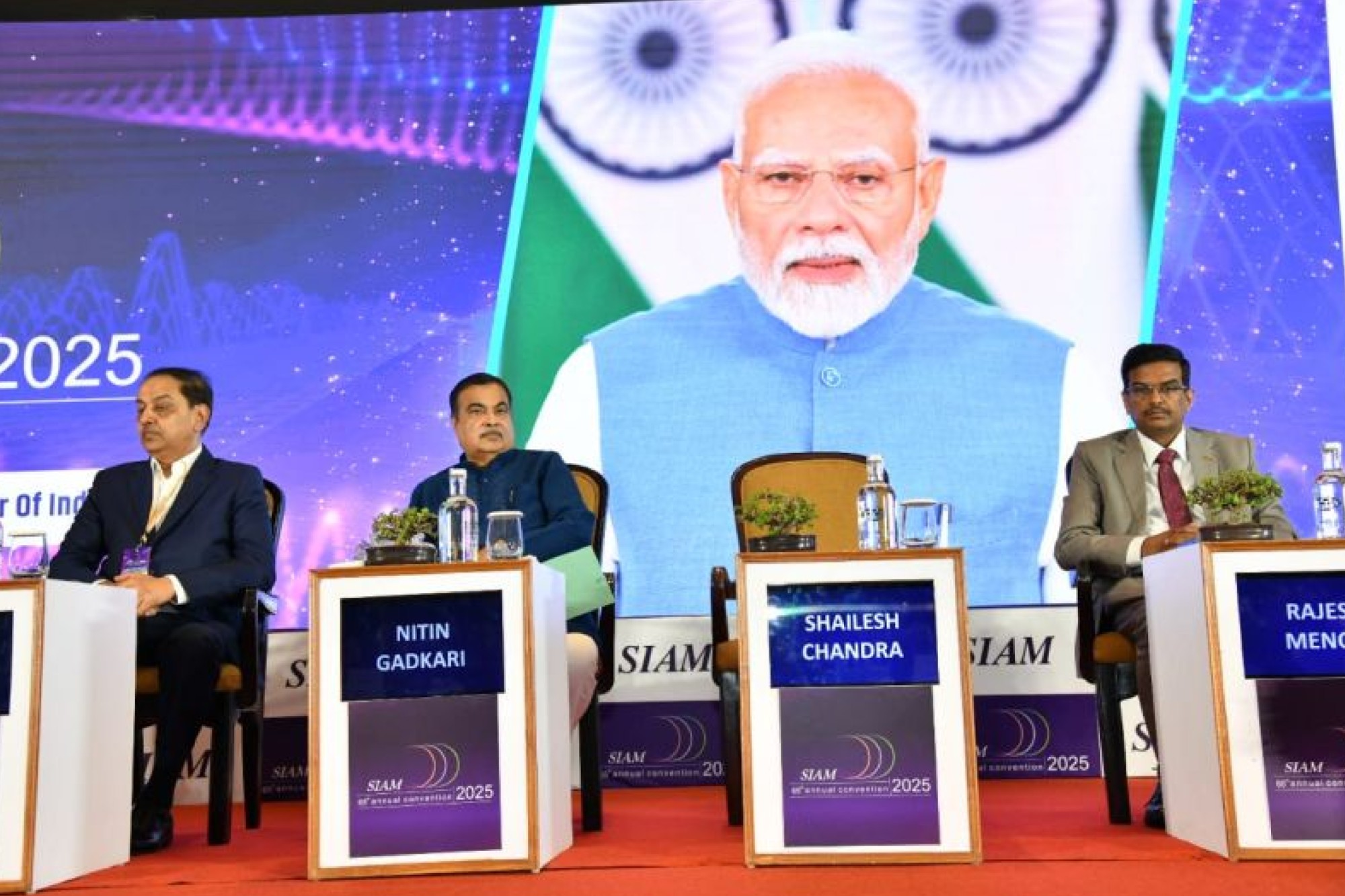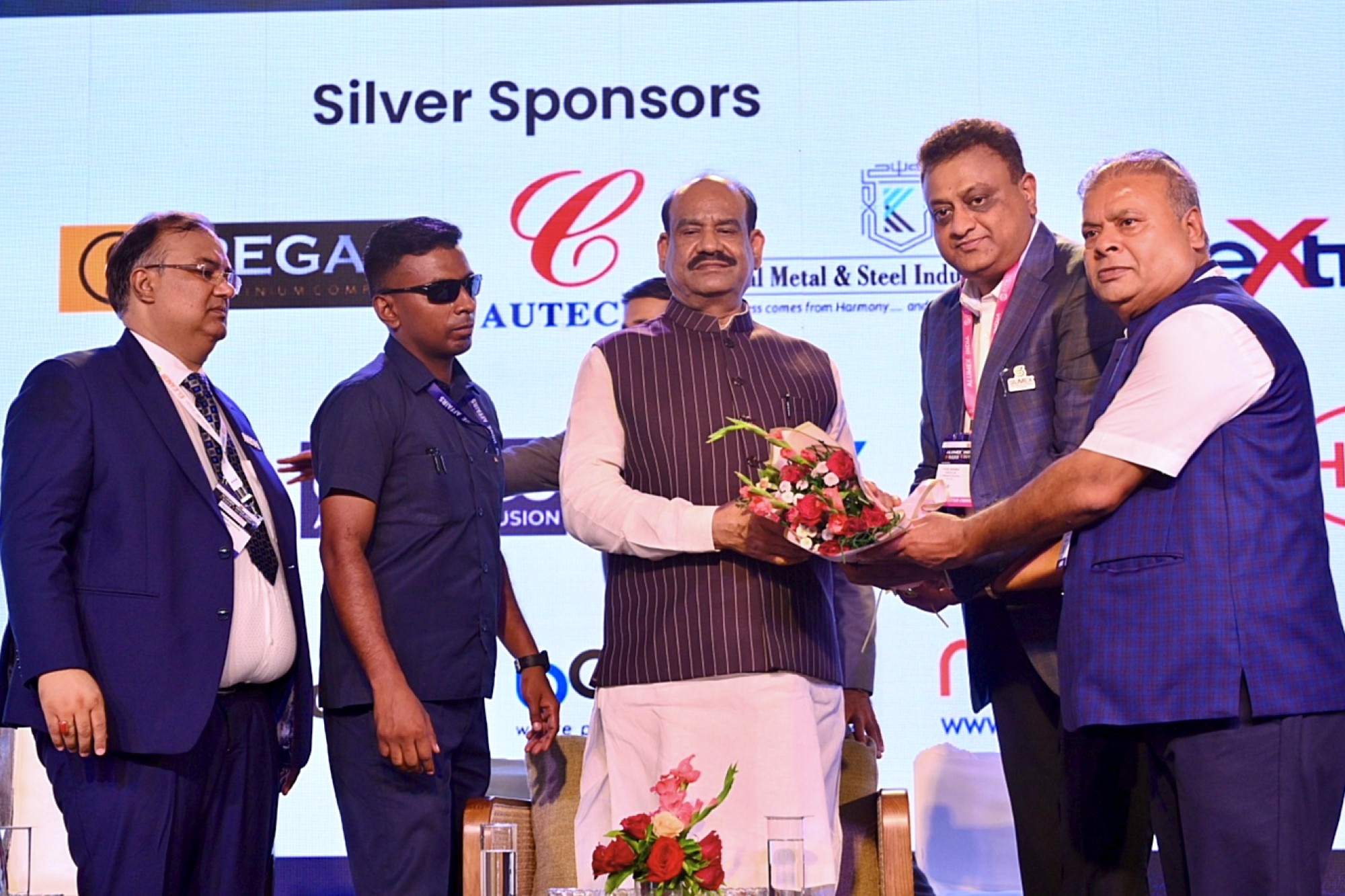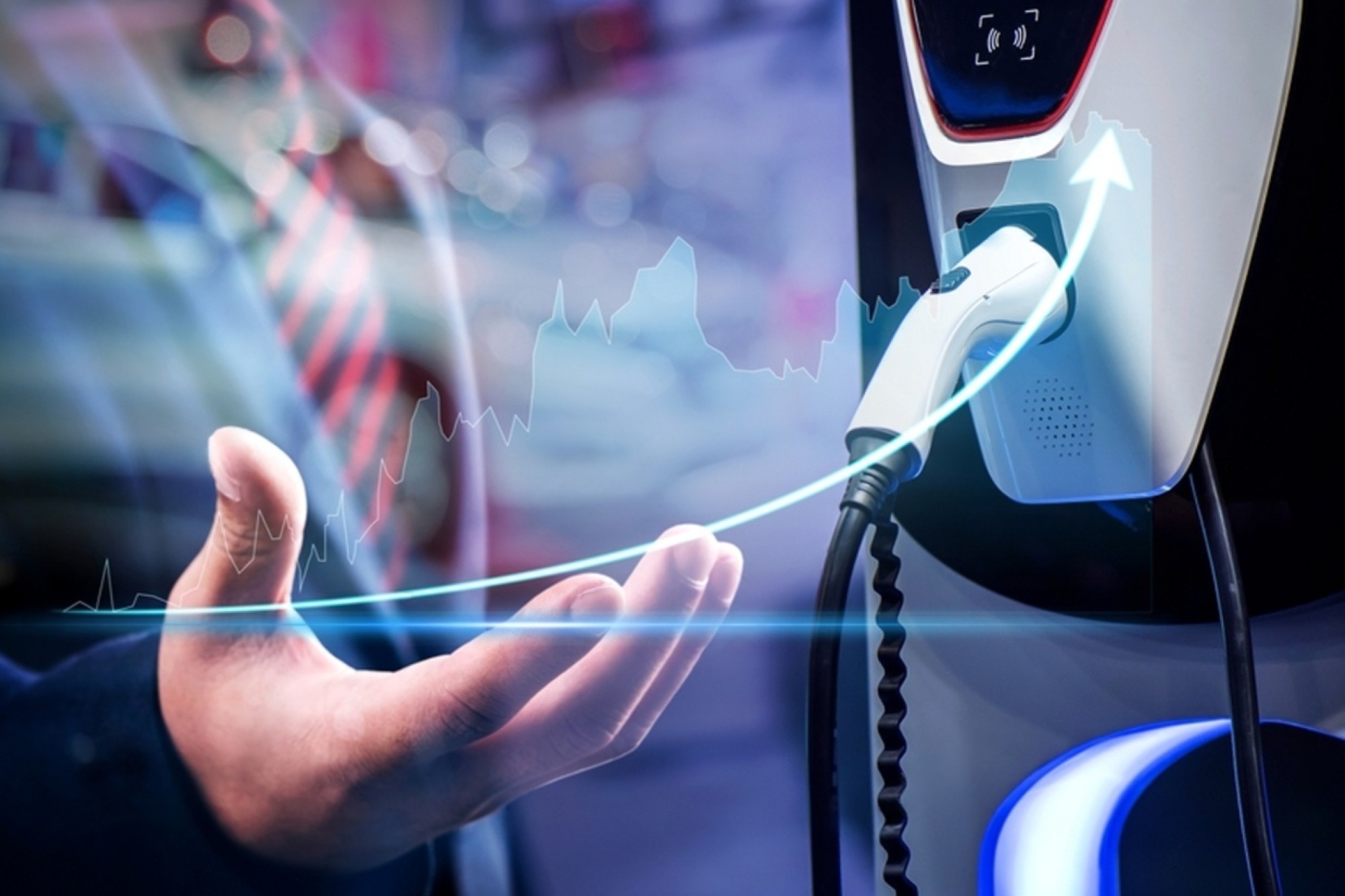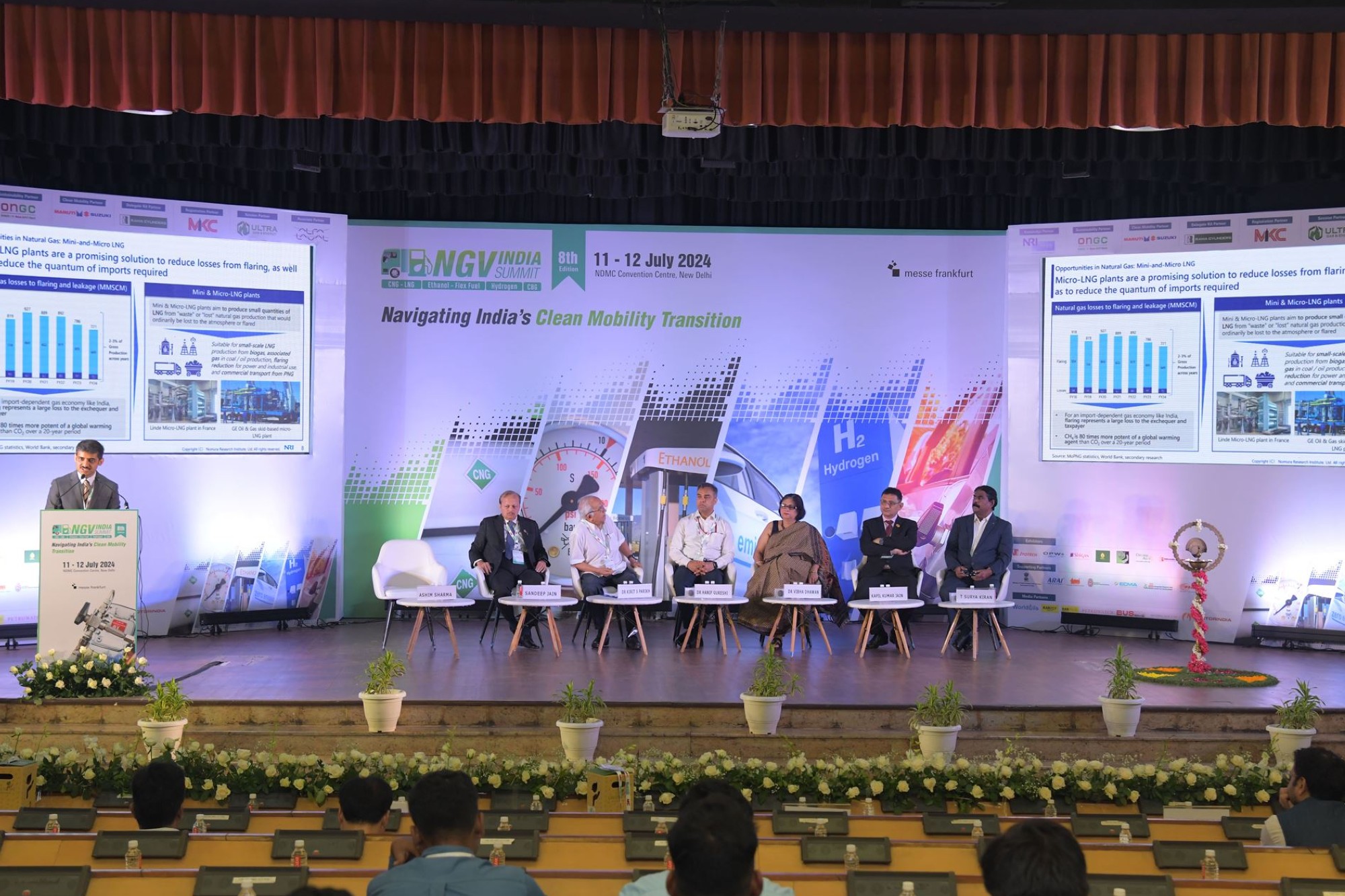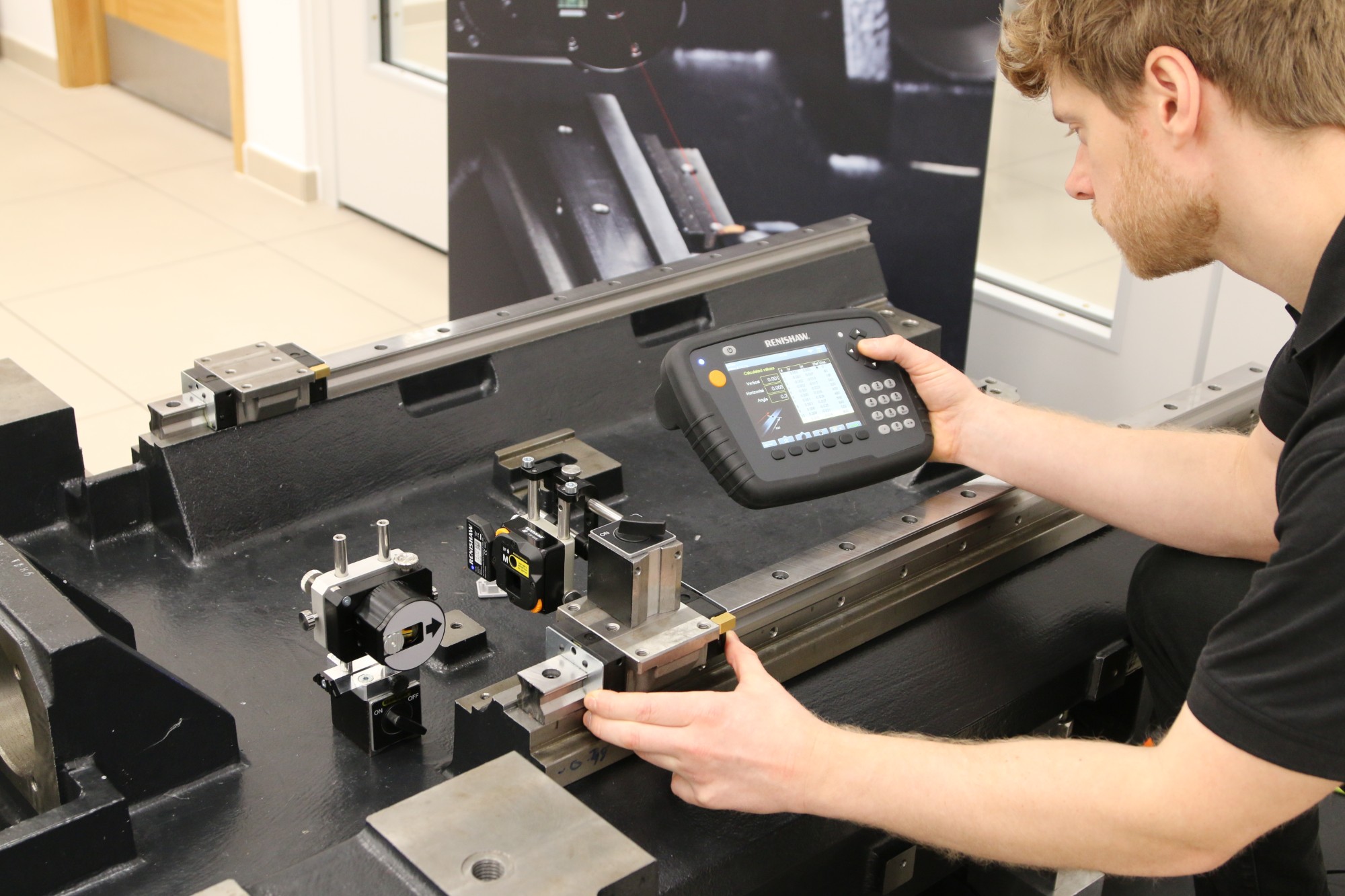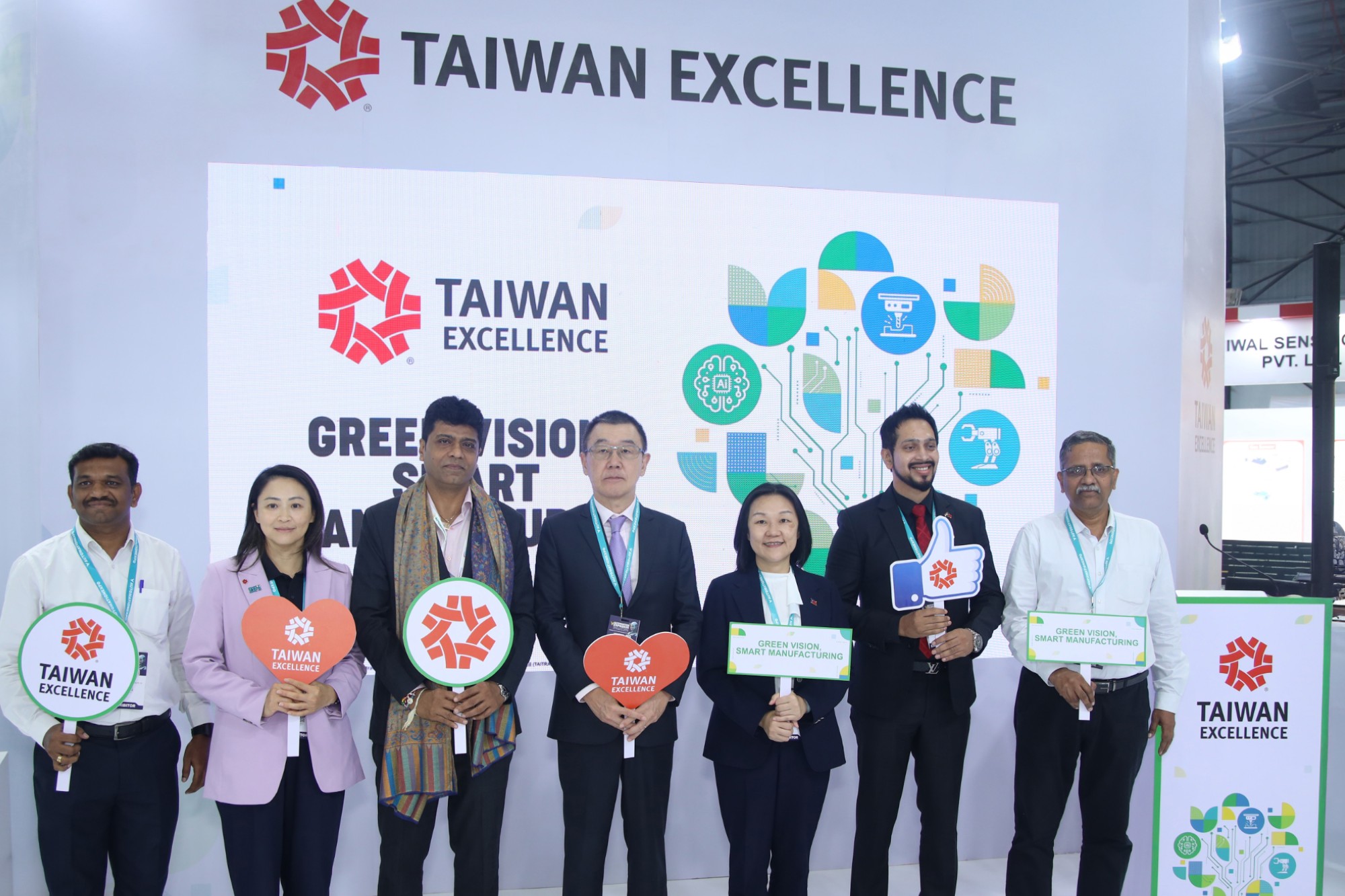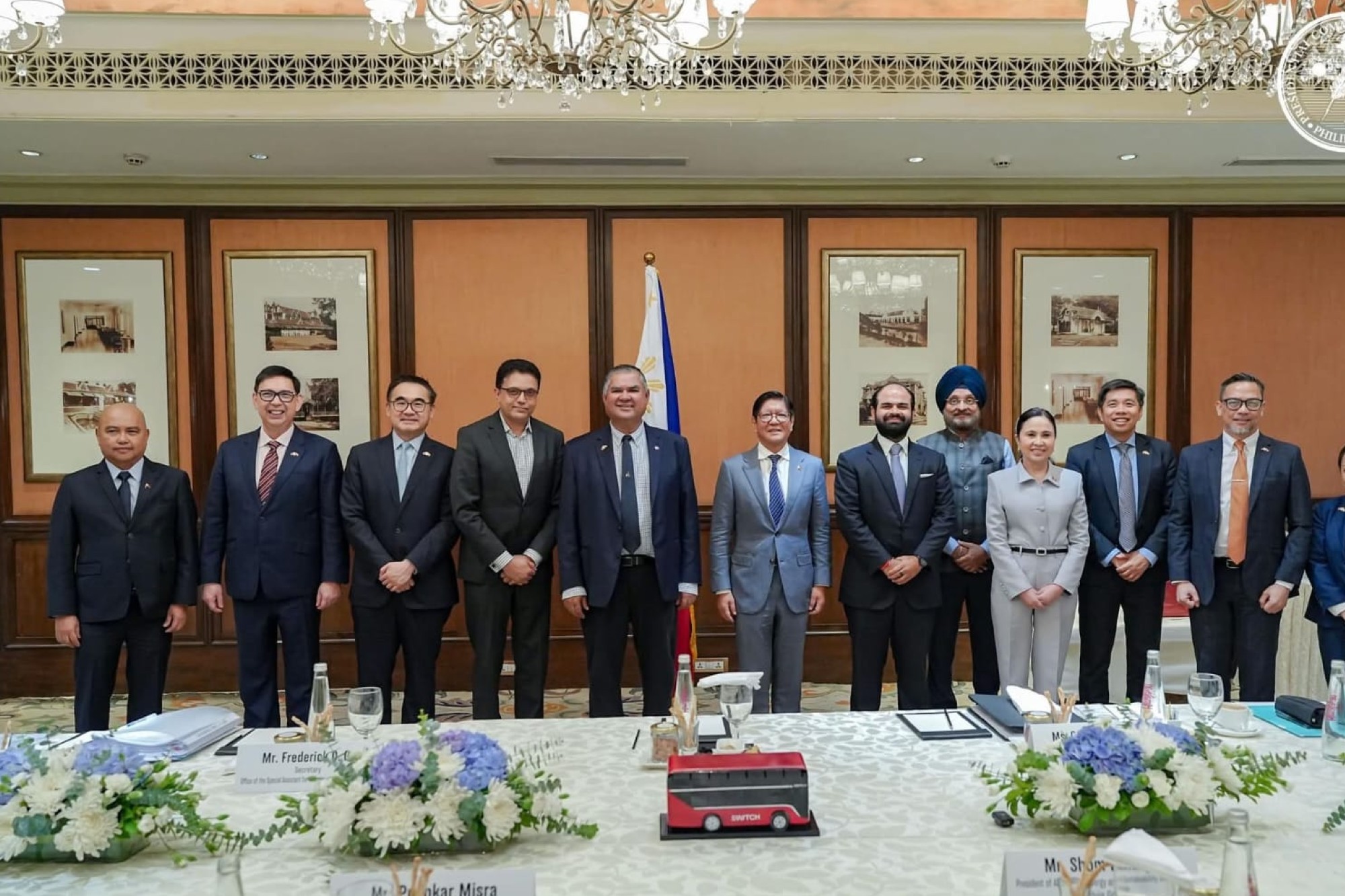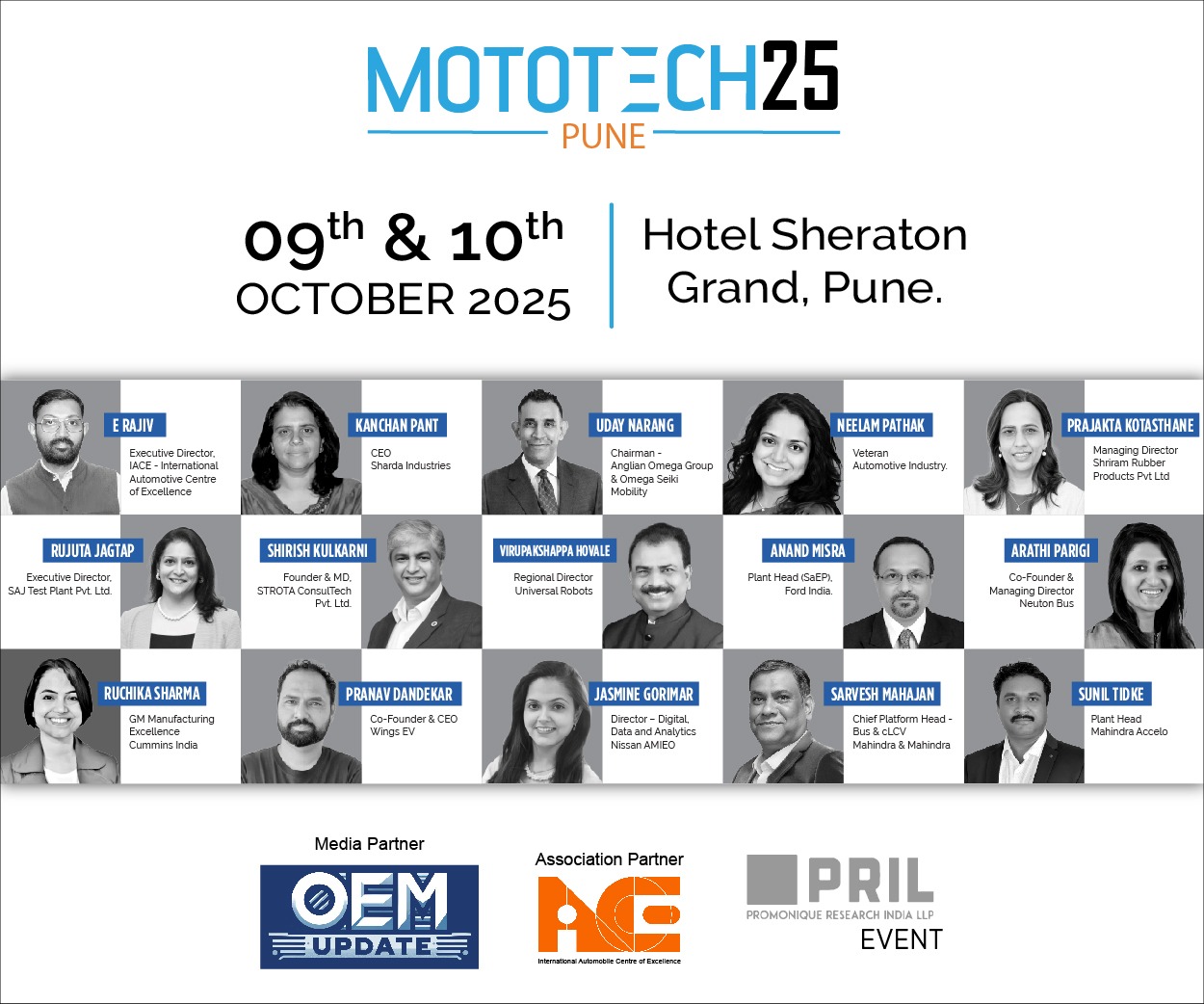Sustainable Mobility Paradigm for Viksit Bharat at SIAM’s 65th Convention
By Staff Report September 11, 2025 6:23 pm IST
The 65th SIAM Annual Convention on “Sustainable Mobility Paradigm for Viksit Bhar” comes at a time when India is taking giant strides towards becoming a global leader in green mobility. This convention brings together policymakers, industry leaders, and innovators to shape the roadmap for the Indian auto industry.
The 65th SIAM (Society of Indian Automobile Manufacturers) Annual Convention, held today at the Hotel Taj Palace & Convention Centre in New Delhi, served as a platform for industry leaders, government officials, and researchers to discuss the future of sustainable mobility in India. The theme of this year’s convention was “Sustainable Mobility Paradigm for Viksit Bharat,” focusing on the blueprint for the sustainable growth of the Indian mobility sector. The agenda of the convention included inaugural and plenary sessions, with key speakers addressing critical topics such as sustainable mobility, software-defined vehicles, and changing global dynamics.
The Welcome and Opening Address was delivered by Shailesh Chandra, President, SIAM and Managing Director, Tata Motors Passenger Vehicles Ltd and Tata Passenger Electric Mobility Ltd. Hon’ble Prime Minister of India, Shri Narendra Modi, shared a special message emphasising the need to achieve true self-reliance across the entire automotive manufacturing value chain. He also added that as the nation moves towards global leadership in green and smart transportation, opportunities for investment and collaboration will be immense.
Guest of Honour, H. D. Kumaraswamy, Union Minister of Heavy Industries and Steel, Government of India, shared a video message where he congratulated SIAM on the event and praised the Indian auto industry’s invaluable contribution to the country’s progress, noting that vehicle production has grown from 2 million in 1991-92 to over 31 million in 2024-25. He detailed the Ministry of Heavy Industries’ initiatives, including the Prime Minister E-Drive scheme and the Production Linked Incentive (PLI) schemes for the automobile and auto component industry, which have seen a capital investment of about Rs. 29,576 crores by March 2025. Mr. Kumaraswamy also assured the industry that the Steel Ministry would provide support by developing specialised steel to reduce import dependency for certain auto components.
Nitin Gadkari, Union Minister of Road Transport & Highways, was the chief guest and participated in a moderated interaction. He thanked the government for creating a supportive ecosystem for the industry and noted that schemes for various powertrains, including electric, hybrid, gaseous, and biofuel-driven vehicles, have been instrumental in the sector’s transition.

Plenary Sessions and Discussions
Following the inaugural session, the convention continued with several plenary sessions that delved into specific topics. In his opening remarks at the Special Plenary Session 1 of the 65th SIAM Annual Convention, Shenu Agarwal, Vice President, SIAM and Managing Director & CEO, Ashok Leyland Ltd., said, “India’s commercial vehicle sector, the backbone of our economy, is undergoing a profound transformation. Growth in light commercial vehicles and buses is being fueled by the expansion of e-mobility and renewed government focus on strengthening public transport. The sector is committed to ambitious net-zero targets and pioneering a circular economy with the rapid deployment of electric buses and commercial vehicles. These steps have already saved thousands of tons of carbon emissions.”
Special Plenary Session 1
Special Plenary Session 1 discussed key enablers that are driving global leadership in sustainable mobility. This session included a presentation by Amit V Gupta from McKinsey & Company, where he shared that the three key drivers to accelerate the transition to sustainable mobility include alternate powertrains, shared mobility, and material circularity. Varying degrees of progress have already been made in this front. He shared, “From FY2020–25, new alternative powertrain vehicle registrations recorded over 40% CAGR growth. More than 75% of the population has access to at least one shared mobility mode. Around 300 vehicle testing facilities are operational to promote circularity. Going forward, we need to promote R&D for new battery technologies, mitigate geopolitical risks in sourcing, and leapfrog in hydrogen powertrain adoption.”
It was followed by the addresses from Unsoo Kim of Hyundai Motor India and Dr. Pawan Goenka, a Past President of SIAM. Tarun Kapoor, Adviser to the Prime Minister, also gave a special address during the continuation of this session in the afternoon.
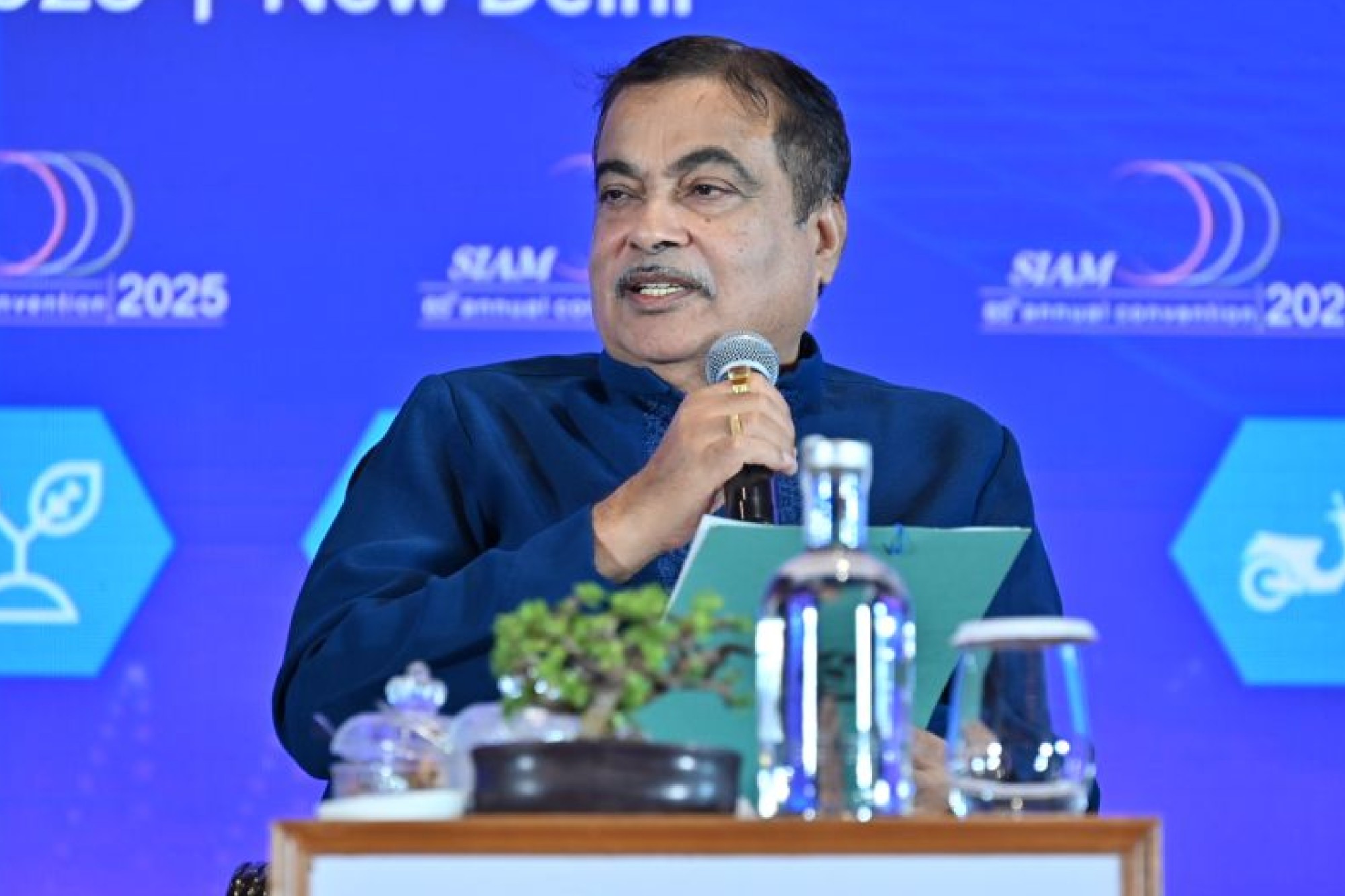
Special Plenary Session 2
Special Plenary Session 2 covered the strategic development and market integration of Software-Defined Vehicles (SDVs) in India. Presentations were given by Dr. Christopher Borroni-Bird from Afreecar, Sri Subramanian from NVIDIA, and Andreas Tschiesner from McKinsey & Company, who discussed the risks, challenges, and benefits of SDVs, the role of Generative AI, and their impact on OEM collaborations. Sri Subramanian discussed the subject, ‘GenAI and SDVs: Powering India’s Vision for Safer, Smarter Mobility,’ citing, “India is currently in a foundational phase of adopting SDVs. Generative AI is not simply another tool; it is a strategic enabler that is fundamentally shaping the Indian automotive sector. Multimodality is the next frontier in GenAI-enabled content creation and content discovery. While 92% of enterprises are investing in AI, only 1% of them have mature AI deployments.” In his presentation at Special Plenary Session 2 of the 65th SIAM Annual Convention, Dr. Christopher Borroni-Bird, Founder, Afreecar, USA, spoke on the subject Risks, Challenges and Benefits of Software Defined Vehicles (SDV) for the Indian Mobility Market. He discussed the attitudes towards technology, which included fear and love of technologies; explained how software-defined vehicles are more like smartphones; gave clarity between connected vehicles and software-defined vehicles; elaborated upon the challenges and opportunities of SDVs and showcased how software and content are taking over the car’s value.
Special Plenary Session 3
Special Plenary Session 3 covered the changing global dynamics and implications for India in the evolving landscape. The final session of the day was opened by Shailesh Chandra and closed by Shradha Suri Marwah, President, ACMA and Chairperson & Managing Director, Subros Ltd. It featured special addresses by Rajesh Agrawal, Special Secretary, Ministry of Commerce and Industry, and Sudhakar Dalela, Secretary (ER), Ministry of External Affairs.
Key Discussion Points & Outcomes
During the question and answer segments, several critical issues were addressed:
• Vehicle Scrappage Policy: Mr. Gadkari highlighted the economic importance of the vehicle scrappage policy. He mentioned that the government and the auto industry have taken action by offering additional discounts for new vehicle purchases with a scrapping certificate. While 3 lakh government vehicles were targeted for scrapping by August 2025, a balance of 97.4 lakh vehicles remained to be scrapped. He also urged manufacturers to establish scrapping centres, automated fitness stations, and driving training centres, calling it a “win-win situation for all stakeholders”. Mr. Gadkari emphasised that scrap is a source of important metals, reduces pollution, and creates additional jobs.
• Road Safety: The growing trend in road fatalities was acknowledged by Mr. Gadkari, who pointed out that while road engineering and vehicle technology have improved, human behaviour determines the outcome. There is a pressing need for public campaigns, similar to those featuring public figures, to promote road safety awareness, particularly among the younger generation.
• E20 and Flex Fuel Technology: Mr. Gadkari spoke on the rollout of the E20 program and flex-fuel technology. He highlighted the economic benefits, noting that the initiative to produce ethanol from maize has generated significant income for farmers. He called the initiative “import substitute, cost-effective, pollution-free, and indigenous” and stated that it aligns with the diversification of agriculture toward the energy sector.
• GST Reduction: The Indian automotive industry expressed its gratitude for the government’s recent decision to reduce GST rates on vehicles. This move is expected to bring renewed momentum to the sector by making vehicles more affordable, particularly for first-time buyers and in the entry-level segment.
The convention concluded with a message of continued collaboration between the government and the industry to achieve the vision of a “Viksit Bharat” (Developed India) by 2047, focusing on sustainability, innovation, and global competitiveness.
Cookie Consent
We use cookies to personalize your experience. By continuing to visit this website you agree to our Terms & Conditions, Privacy Policy and Cookie Policy.



